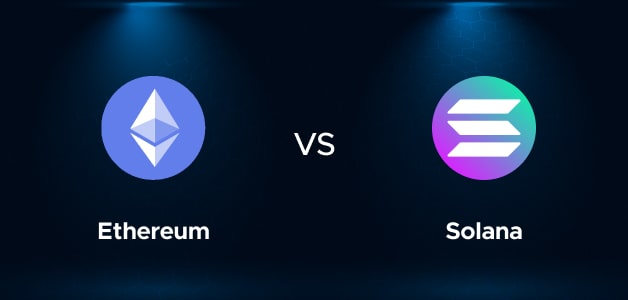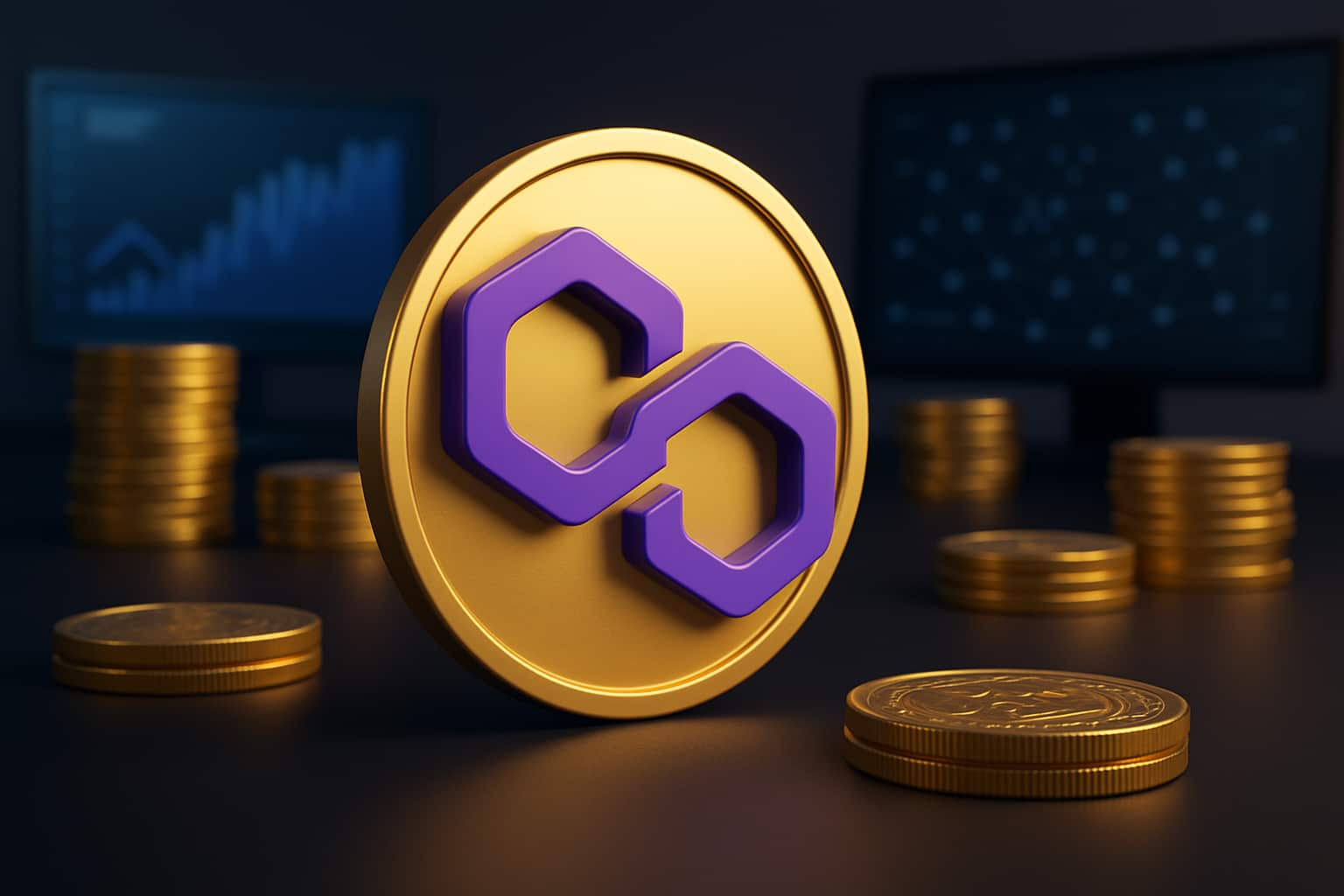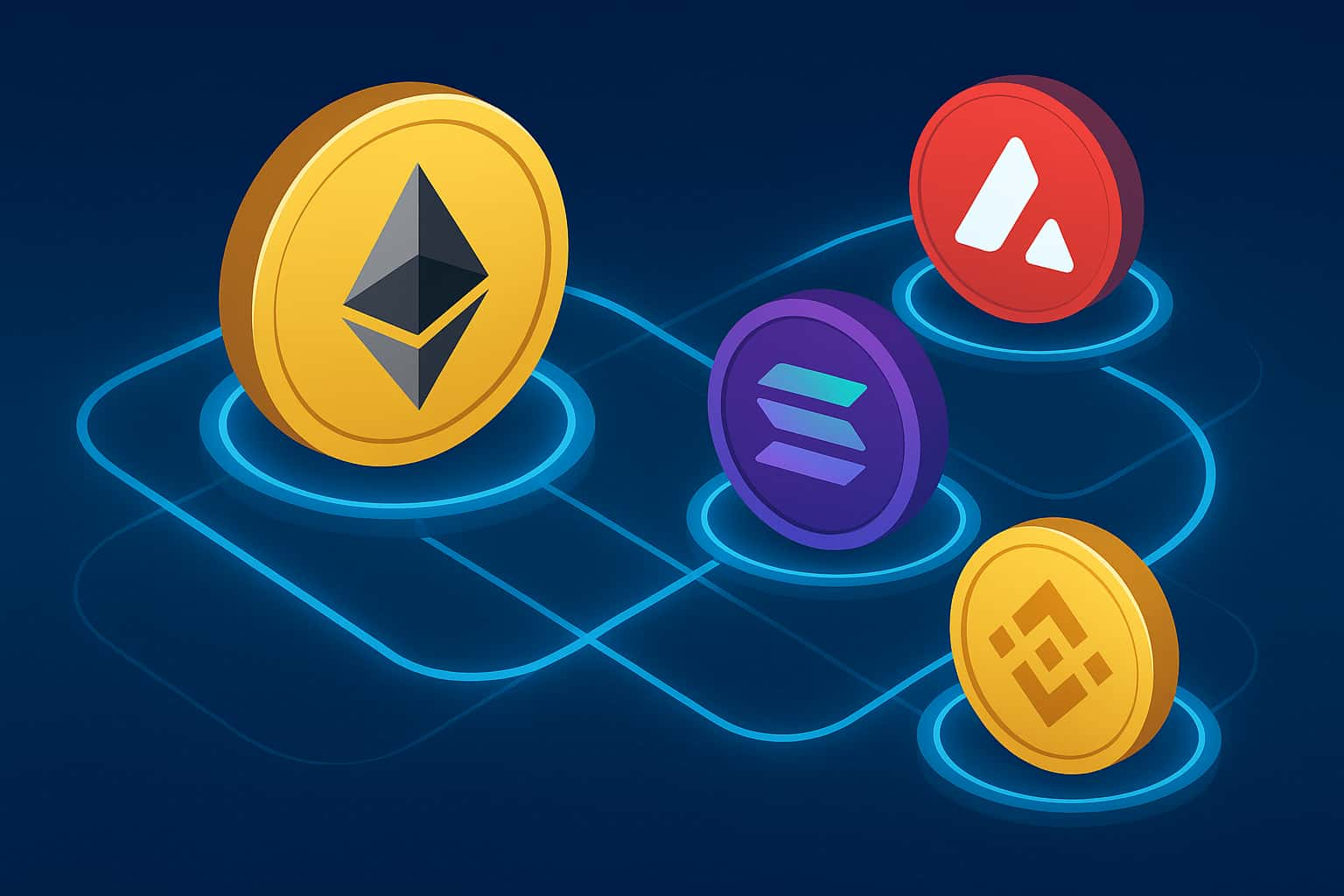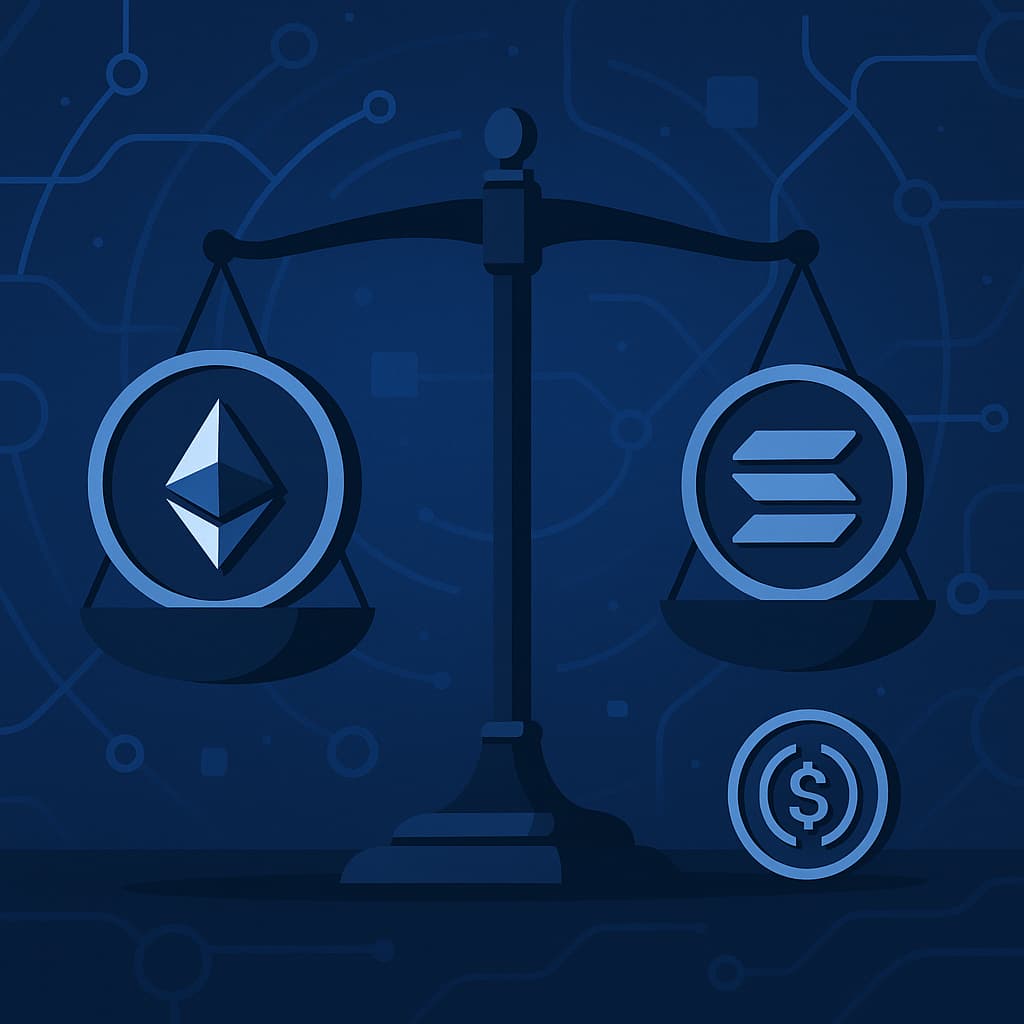-
The blockchain app development space is evolving rapidly, with various platforms competing for dominance in the realm of decentralized applications (dApps). Two of the most prominent names in this space are Ethereum and Solana. As enterprises and developers look to leverage blockchain technology for business applications, understanding the technical and operational differences between these two platforms is crucial. This article provides a comprehensive comparison of Solana and Ethereum, exploring which platform may be better suited for developing and deploying dApps.
Introduction to dApps and Blockchain Platforms
Decentralized applications (dApps) are revolutionizing industries by enabling peer-to-peer interactions without relying on centralized intermediaries. They offer enhanced security, transparency, and control, which are critical for sectors such as finance, supply chain, healthcare, and more. As businesses seek robust solutions to streamline operations and improve user trust, selecting the right blockchain platform is essential.
Ethereum, often considered the pioneer of smart contract platforms, has been the go-to blockchain for dApp development for several years. Meanwhile, Solana has emerged as a high-performance alternative with claims of superior transaction speeds and lower costs. This article examines both platforms in-depth, comparing their core features, performance metrics, developer ecosystems, and suitability for enterprise-level dApps.
Overview of Ethereum
Ethereum, launched in 2015, is a decentralized, open-source blockchain featuring smart contract functionality. Its platform has paved the way for a myriad of dApps, ranging from decentralized finance (DeFi) to non-fungible tokens (NFTs). Ethereum's influence on the blockchain space is undeniable, and its large developer community continues to drive innovation.
Key Features of Ethereum
- Smart Contracts: Ethereum introduced programmable smart contracts that automatically execute transactions when certain conditions are met.
- Decentralization: As a public blockchain, Ethereum is highly decentralized, ensuring no single point of failure or control.
- Robust Ecosystem: With thousands of dApps and a vibrant developer community, Ethereum benefits from extensive resources, documentation, and third-party tools.
- Ethereum Virtual Machine (EVM): The EVM allows developers to create and deploy smart contracts in a standardized environment using languages like Solidity.
- Upcoming Upgrades: Ethereum is in the process of transitioning from Proof-of-Work (PoW) to Proof-of-Stake (PoS) with Ethereum 2.0, which aims to enhance scalability and reduce energy consumption.
Also, Read | Implementing a Layer-2 Bridge Interface for Ethereum Blockchain
Strengths of Ethereum for dApp Development
Ethereum's strength lies in its maturity and large user base. The platform has been battle-tested, and its extensive network effects provide significant advantages for developers looking to build secure and decentralized applications. Its ecosystem is replete with developer tools, libraries, and frameworks that simplify the process of dApp creation and deployment.
Additionally, the upcoming Ethereum 2.0 upgrade is expected to address scalability issues, improve transaction throughput, and reduce fees, making it even more attractive for enterprise applications in the near future.
Challenges Facing Ethereum
Despite its strong foundation, Ethereum faces several challenges:
- Scalability: High network congestion has led to slower transaction speeds and increased fees, which can hinder large-scale enterprise adoption.
- Transition to PoS: The ongoing transition to Ethereum 2.0, while promising, presents risks and uncertainties during the migration period.
- Energy Consumption: Under the current PoW model, Ethereum has been criticized for its high energy consumption, though this is expected to improve post-transition.
Also, Check | Implementing a Layer 2 payment channel network in Ethereum
Overview of Solana
Launched in 2020, Solana is a high-performance blockchain platform that has gained significant traction for its rapid transaction speeds and low fees. Solana is designed to support scalable dApp development by employing innovative consensus mechanisms and architecture.
Key Features of Solana
- High Throughput: Solana boasts a high transaction throughput, reportedly handling up to 65,000 transactions per second (TPS) under optimal conditions.
- Low Transaction Fees: The network is designed to maintain minimal transaction costs, making it ideal for applications requiring micro-transactions or high-frequency trading.
- Proof-of-History (PoH): Solana introduces a novel consensus mechanism called Proof-of-History, which timestamps transactions before they are processed, increasing efficiency and scalability.
- Developer-Friendly: Solana supports programming in Rust and C, providing developers with flexible options and modern toolsets to build robust dApps.
- Rapid Confirmation Times: With confirmation times often in the sub-second range, Solana is well-suited for applications that require near-instantaneous transactions.
Also, Discover | Batch Transactions on Solana for Improved Efficiency
Strengths of Solana for dApp Development
Solana's high performance and low transaction fees present a compelling case for developers and enterprises seeking scalable dApp solutions. The platform's architecture is designed to support a vast number of transactions without the bottlenecks experienced by older blockchain networks.
Moreover, the use of Proof-of-History and other innovative technical approaches allows Solana to achieve high throughput without compromising on decentralization. Its growing ecosystem includes various DeFi platforms, NFT marketplaces, and gaming applications, all benefiting from the platform's performance capabilities.
Challenges Facing Solana
Despite its promising features, Solana is not without its challenges:
- Network Stability: As a relatively new platform, Solana has experienced occasional network outages and performance issues, raising concerns about its long-term stability.
- Decentralization Concerns: Some critics argue that Solana's architecture may lead to centralization risks due to the relatively high hardware requirements for validators.
- Ecosystem Maturity: Although rapidly growing, Solana's ecosystem is still maturing compared to Ethereum's extensive network and developer support.
Also, Explore | Building a Solana NFT Rarity Ranking Tool
Comparative Analysis: Ethereum vs. Solana for dApps
When evaluating blockchain platforms for dApp development, several critical factors come into play. Below, we provide a detailed comparison of Ethereum and Solana based on performance, scalability, cost, security, and developer ecosystem.
Performance and Scalability
Ethereum: Ethereum has been the industry standard for dApps, but it faces challenges with scalability. Under heavy load, transaction times can increase significantly, and gas fees can spike, making it less suitable for applications requiring high throughput. The transition to Ethereum 2.0 is expected to mitigate some of these issues, but the full benefits remain to be seen.
Solana: Solana is built for high performance. With the ability to handle thousands of transactions per second and near-instant confirmation times, it is designed to scale efficiently. For dApps that require fast and frequent transactions—such as gaming platforms, high-frequency trading applications, or micro-payment systems—Solana offers a distinct advantage over Ethereum.
Transaction Costs
Ethereum: High gas fees have been a recurring pain point for Ethereum users, especially during periods of network congestion. This can pose a significant barrier for dApps that rely on micro-transactions or have a large user base, as the cost of each transaction may become prohibitive.
Solana: Solana's architecture allows for extremely low transaction fees, often a fraction of a cent. This cost efficiency is attractive for businesses and developers looking to build cost-effective dApps, particularly when scaling to millions of transactions.
Security and Decentralization
Ethereum: Ethereum's long-standing history and large network of nodes have contributed to a robust and secure platform. Its decentralized nature has been proven over time, making it a trusted platform for a variety of high-stakes applications. The move to a Proof-of-Stake consensus with Ethereum 2.0 is designed to further enhance security while reducing energy consumption.
Solana: Solana employs a combination of Proof-of-History and Proof-of-Stake, which offers high performance but has raised questions about its level of decentralization compared to Ethereum. While Solana's security mechanisms are innovative, the platform's relative youth means that its long-term resilience is still under observation.
Developer Ecosystem and Community Support
Ethereum: One of Ethereum's biggest strengths is its mature developer ecosystem. With extensive documentation, a wide range of development tools, and a large, active community, developers have access to a wealth of resources. This robust support network simplifies dApp development and accelerates time-to-market for enterprise solutions.
Solana: Solana has been rapidly building its developer community, with growing resources and support channels. While it may not yet match Ethereum's ecosystem in terms of size, its focus on performance and cost-efficiency has attracted a new wave of developers interested in building next-generation dApps.
Interoperability and Integration
Ethereum: Ethereum's extensive network and compatibility with a variety of tools and protocols make it an excellent choice for interoperability. Many enterprise solutions rely on Ethereum's established standards for integrating with other systems and legacy technologies.
Solana: Solana is making strides in building bridges and interoperability protocols to connect with other blockchains and traditional systems. As the platform continues to mature, its ability to integrate seamlessly with other technologies will be crucial for wider enterprise adoption.
Energy Efficiency
Ethereum: Under its current Proof-of-Work model, Ethereum has been criticized for its energy consumption. The transition to Proof-of-Stake with Ethereum 2.0 aims to address these concerns by significantly reducing the network's carbon footprint.
Solana: Solana's consensus mechanism is designed to be energy-efficient, offering an advantage for companies looking to implement sustainable technology solutions. This efficiency not only reduces operational costs but also aligns with corporate social responsibility goals.
You may also like | Quantum-Resistant Blockchain App Development Using Mochimo
Enterprise Considerations for dApp Development
For businesses evaluating blockchain platforms for their dApp projects, the decision between Ethereum and Solana should be driven by specific project requirements and long-term strategic goals. Here are some key enterprise considerations:
- Scalability Needs: If your dApp is expected to handle high transaction volumes with minimal latency, Solana's architecture may provide a better fit. On the other hand, if your application relies on a robust, battle-tested network, Ethereum's mature infrastructure remains a strong candidate.
- Cost Sensitivity: Businesses that are highly sensitive to transaction costs, especially those processing micro-transactions, may benefit from Solana's low fees. Ethereum's higher gas fees can be a deterrent for certain business models, although layer-2 solutions and the transition to Ethereum 2.0 are aimed at mitigating these issues.
- Security and Compliance: For applications where security is paramount—such as financial services and healthcare—Ethereum's proven track record may offer additional reassurance. Enterprises must also consider regulatory compliance and data security, areas where both platforms are making strides but may have differing audit frameworks and community standards.
- Developer Resources: The availability of experienced developers and extensive documentation can significantly reduce development time and costs. Ethereum's established ecosystem currently provides a wider pool of talent and tools, while Solana's community is rapidly expanding.
- Interoperability Requirements: If your enterprise strategy involves integrating blockchain solutions with existing systems or other blockchains, Ethereum's long history and established standards could offer a seamless integration experience. Solana is actively working on interoperability solutions, which could prove advantageous in the long run.
Case Studies and Industry Adoption
Many enterprises have already adopted Ethereum for a variety of dApp solutions ranging from decentralized finance (DeFi) to supply chain management. For example, major DeFi platforms and NFT marketplaces have built on Ethereum, leveraging its robust ecosystem to drive significant user engagement and transaction volumes.
In contrast, Solana has seen rapid adoption in sectors where speed and cost-efficiency are critical. Startups and innovative projects in the gaming and trading sectors are increasingly choosing Solana to deliver seamless user experiences and handle high-frequency transactions.
These case studies highlight that the choice between Ethereum and Solana is not simply about one platform being inherently better than the other; rather, it's about aligning the platform's strengths with your specific business needs and technical requirements.
Future Outlook and Trends
The blockchain space is continuously evolving, and both Ethereum and Solana are poised to benefit from ongoing innovations. Ethereum's transition to Ethereum 2.0 is expected to enhance scalability and reduce environmental impact, potentially solidifying its position as the go-to platform for enterprise dApps. At the same time, Solana's focus on high throughput and low transaction fees positions it as a formidable competitor, particularly for applications that demand rapid, cost-effective processing.
Emerging trends such as the rise of decentralized finance, non-fungible tokens, and enterprise blockchain integrations indicate that both platforms will continue to play significant roles in the industry. Enterprises should keep a close eye on these developments and be prepared to adopt hybrid or multi-chain strategies that leverage the unique strengths of each platform.
You may also like to explore | Exploring the Top Blockchain Platforms for Your Enterprise
Conclusion
Choosing between Solana and Ethereum for dApp development involves weighing the trade-offs between performance, cost, security, and ecosystem maturity. Ethereum's extensive history, large developer community, and proven security make it an excellent choice for applications where decentralization and trust are paramount. However, its current scalability issues and higher transaction fees can be limiting factors.
On the other hand, Solana offers compelling advantages in terms of high throughput, low fees, and energy efficiency, making it particularly well-suited for dApps that require rapid, high-frequency transactions. While Solana is still growing in terms of ecosystem maturity, its innovative consensus mechanisms and performance characteristics make it an attractive option for forward-thinking enterprises.
For businesses, the decision should be based on specific project requirements, long-term strategic goals, and the intended user experience. In many cases, a hybrid approach or multi-chain strategy may offer the best of both worlds, allowing enterprises to leverage Ethereum's robustness while capitalizing on Solana's performance benefits.
Ultimately, both Ethereum and Solana are at the forefront of blockchain innovation, and the competitive dynamics between them are likely to drive further improvements that benefit developers and enterprises alike. As the blockchain ecosystem evolves, staying informed about technological advancements and industry trends will be crucial for making the right strategic decisions.
Frequently Asked Questions (FAQ)
Q1: What are the primary differences between Ethereum and Solana?
A: Ethereum is known for its mature ecosystem, robust security, and large developer community, while Solana is recognized for its high throughput, low transaction fees, and innovative consensus mechanism called Proof-of-History. Ethereum's scalability issues and higher gas fees contrast with Solana's performance advantages, making each platform suitable for different types of dApps.
Q2: Which platform is more suitable for high-frequency transactions?
A: Solana is generally more suitable for high-frequency transactions due to its ability to handle up to 65,000 transactions per second and its low transaction fees. This makes it ideal for applications like gaming, trading, and micro-payment systems.
Q3: Is Ethereum's transition to Ethereum 2.0 expected to resolve its scalability issues?
A: Ethereum 2.0, which involves a transition to Proof-of-Stake, is designed to address scalability challenges and reduce energy consumption. While the upgrade is promising, its full impact will depend on successful implementation and community adoption.
Q4: How does developer support compare between the two platforms?
A: Ethereum benefits from a long-established developer ecosystem with extensive documentation, libraries, and community support. Solana is rapidly growing its developer base and offers modern tools and programming languages like Rust and C, but its ecosystem is not yet as extensive as Ethereum's.
Q5: Can I integrate dApps built on Ethereum with other enterprise systems?
A: Yes, Ethereum's mature ecosystem and interoperability standards make it relatively straightforward to integrate dApps with existing enterprise systems. Numerous APIs, middleware solutions, and integration tools are available to facilitate this process.
Q6: Which platform offers better cost efficiency for dApp transactions?
A: Solana is known for its extremely low transaction fees, often a fraction of a cent, which makes it highly cost-efficient for dApp transactions. Ethereum, while more established, can incur higher costs during periods of network congestion, although layer-2 solutions and Ethereum 2.0 aim to mitigate these expenses.
Q7: What factors should enterprises consider when choosing between Ethereum and Solana?
A: Enterprises should consider scalability needs, transaction costs, security requirements, developer ecosystem maturity, interoperability with legacy systems, and long-term strategic goals. In many cases, a multi-chain strategy might be the most effective solution to leverage the strengths of both platforms.
Final Thoughts
Both Ethereum and Solana offer unique advantages for developing decentralized applications. While Ethereum's proven track record, security, and extensive developer community make it a reliable choice, Solana's high performance and cost efficiency are strong contenders for high-demand applications. The decision ultimately depends on the specific needs of your project and the strategic direction of your business. Staying abreast of ongoing technological developments and market trends will enable enterprises to make informed decisions that drive innovation and competitive advantage in the rapidly evolving blockchain space. Connect with our experienced blockchain developers to get started with blockchain app development for your decentralized project.

Our Offices
INDIA
Emaar Digital Greens, Sector 61,
Gurugram, Haryana
122011.
Welldone Tech Park,
Sector 48, Sohna road,
Gurugram, Haryana
122018.















